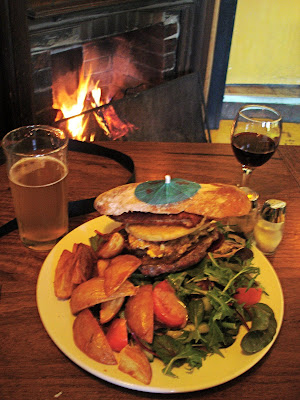
This is the draft of the artist statement I'm writing for the catalogue for my show. Get it into ya...
NATURAL HISTORIES…
As a realist painter I deal in contradiction. I produce images that, ostensibly, portray an objective view of reality- a seemingly concrete environment that one might inhabit and navigate. In truth, this is, of course, an illusion- a trick played in pigment and oil on a flat surface. Further, the scenes depicted are completely synthetic, more often than not constructed of details drawn from multiple sources and vantage points, rather than a single real place that one might actually visit. Hopefully, all these disparate elements are woven together in a fashion that is convincing enough to suspend disbelief in the viewer. In this way a painting can become more than mere reportage- it can allude to something larger and become greater than just the sum of its parts.
This exhibition, my first with Walter Granek and Art at Cyclone, represents a transitional period in my work. The earlier paintings are set in the outdoors, usually rooted in the landscape and concerned with notions of the Romantic and the sublime. The later works are exclusively interiors, all imagined as an expanding vision of some grand, virtual museum. Uniting both bodies of work is an overarching concern with a quality of memento mori, an attempt to prompt in the viewer a moment of existential reflection.
Museums have always been magical, liminal places to me. I have strong memories of visiting, on school excursions, the old museum on Swanston Street (where I first made Phar-Lap’s acquaintance) and of other museums throughout my childhood. Museums are places where objects and creatures, some dangerous or long gone, are removed from their context and can be examined with impunity. And, like painting, museums are also about illusion. They project an air of control and suspended animation yet cannot help but reflect upon the inexorable passing of time.
This new body of work was begun with the White Shark paintings- they, like museums, have been an abiding fascination for as long as I can remember. Indeed, the model for these paintings hangs, with a big toothy grin, in the foyer of The Melbourne Museum. During the course of these first few paintings, I came to realize the versatility of the museum as subject, and its ability to ground and give context to a seemingly unlimited range of concerns. I imagine I will be exploring it for some time to come.















